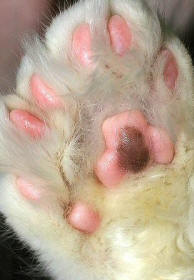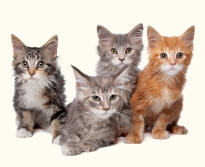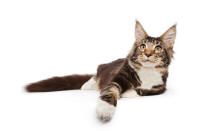Glossary

Digit
The distal parts of a limb, such as fingers or toes.
These are named and identified by Roman numerals.
In a pentadactyl (five-fingered or five-toed) arrangement, the most medial digit, if present, is I (e.g. the human thumb) and the most lateral is V (e.g. the human little finger).
These are named and identified by Roman numerals.
In a pentadactyl (five-fingered or five-toed) arrangement, the most medial digit, if present, is I (e.g. the human thumb) and the most lateral is V (e.g. the human little finger).
Diprotodontia
Order of marsupial and (usually) herbivore mammals In Australasia that have two large incisors (front teeth).
e.g. kangaroos, wallabies, koalas and possums.
e.g. kangaroos, wallabies, koalas and possums.
Split Foot
A foot that has two or more digits (toes) wholly or partly joined together. The extent of the join may vary from a membrane of skin to a full fusion of bone.
Syndactyl
Having two or more digits (fingers or toes) wholly or partly joined together.
The extent of the join may vary from a membrane of skin to a full fusion of bone.
The extent of the join may vary from a membrane of skin to a full fusion of bone.
Title5
text
Hemingway Cat
A cat that has more than the usual number of digits (fingers or toes).


Title7
text
Title8
text
Title9
text
hover over shaded words to reveal more
Polydactyl
Having more than the usual number of digits (fingers or toes).
The supernumerary digit may vary from a soft tissue to a complete functioning digit.
Polydactyly (n.) is a congenital abnormality not uncommon in cats; polydactyl cats are known by many names, such as Hemingway cats, mitten cats (cats with mitten feet), thumb cats, Cardi cats, and six-finger cats.
Cf. syndactyl foot






